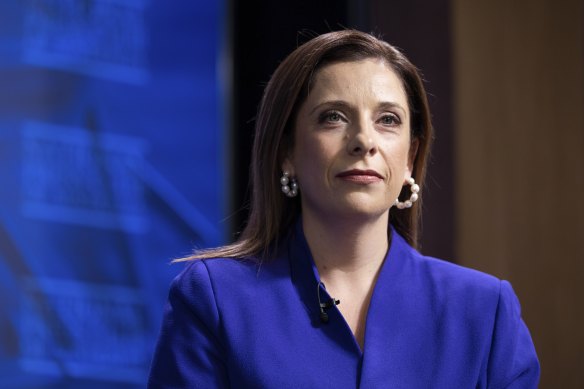Save articles for later
Add articles to your saved list and come back to them any time.
There is a quote that “change is inevitable except from a vending machine”. However, in the world of aged care, change is constant.
Last week, Minister for Aged Care, Anika Wells, announced the establishment of an aged care taskforce to review the fees and funding arrangements for aged care. The task force is expected to provide its interim advice to the government in October with a package of recommendations to be delivered by the end of the year.
Last week, Minister for Aged Care, Anika Wells, announced the establishment of an aged care taskforce.Credit: Alex Ellinghausen
Some of the specific advice requested from the new task force includes a fair and equitable approach to means-testing contributions across home and residential aged care and reforms to pricing and funding for accommodation and hotel costs, including the phasing out of Refundable Accommodation Deposits (RAD’s).
How to finance and fund aged care was an area of reform that the royal commission found difficult. In fact, it was an area where there was no agreement on a single approach.
While the commissioners had differing views, they broadly agreed that reform of aged care fees and funding should include:
- Changes to means testing arrangements so that people, whether they receive care at home or residential aged care, would not be required to make a contribution towards the cost of their care. People would need to make contributions towards their accommodation and everyday living expenses with no lifetime cap and a safety net for people of low means.
- The means testing arrangements would be aligned with Age Pension means testing arrangements so pensioners would not be liable to contribute beyond the Basic Daily Fee (currently $59 per day). Like the Age Pension, the means testing would use an asset and income test and apply the test that creates the highest contribution. The exemption that applies to the family home would also align with the pension rules exempting the home while a spouse lives there and for up to two years after entering aged care, removing carers and close relatives from the exemption criteria.
- Phasing out of lump sum Refundable Accommodation Deposits (RADs) and moving to a rental style model. Removing the liquidity issues that RADs create for aged care providers and encouraging investment in the sector from capital markets rather than residents.
- The introduction of a tax levy, be it a dedicated aged care levy or a less formal model, to assist in funding the system.
The taskforce will consider the royal commission’s views in forming its advice to government, and ultimately, it will need to balance how much taxpayers contribute towards the cost of aged care with how much people should pay for themselves.
At the end of the day, there are only two parties that pay for aged care the government through the taxes they collect and the person who is using the service.
Rachel Lane is the principal of Aged Care Gurus and co-author of Aged Care, Who Cares? and Downsizing Made Simple.
- Advice given in this article is general in nature and is not intended to influence readers’ decisions about investing or financial products. They should always seek their own professional advice that takes into account their own personal circumstances before making any financial decisions.
Most Viewed in Money
Source: Read Full Article
-
U.S. Job Growth Far Exceeds Expectations In July
-
Mission accomplished? Fed’s inflation success raises hopes for RBA
-
ZIM Integrated Shipping Q4 Results Down, But Top Estimates; Stock Up In Pre-market
-
Eurozone Investor Confidence Signals Economic Downturn: Sentix
-
‘Old-world’ stocks gave the ASX an edge this year. Can it continue?


